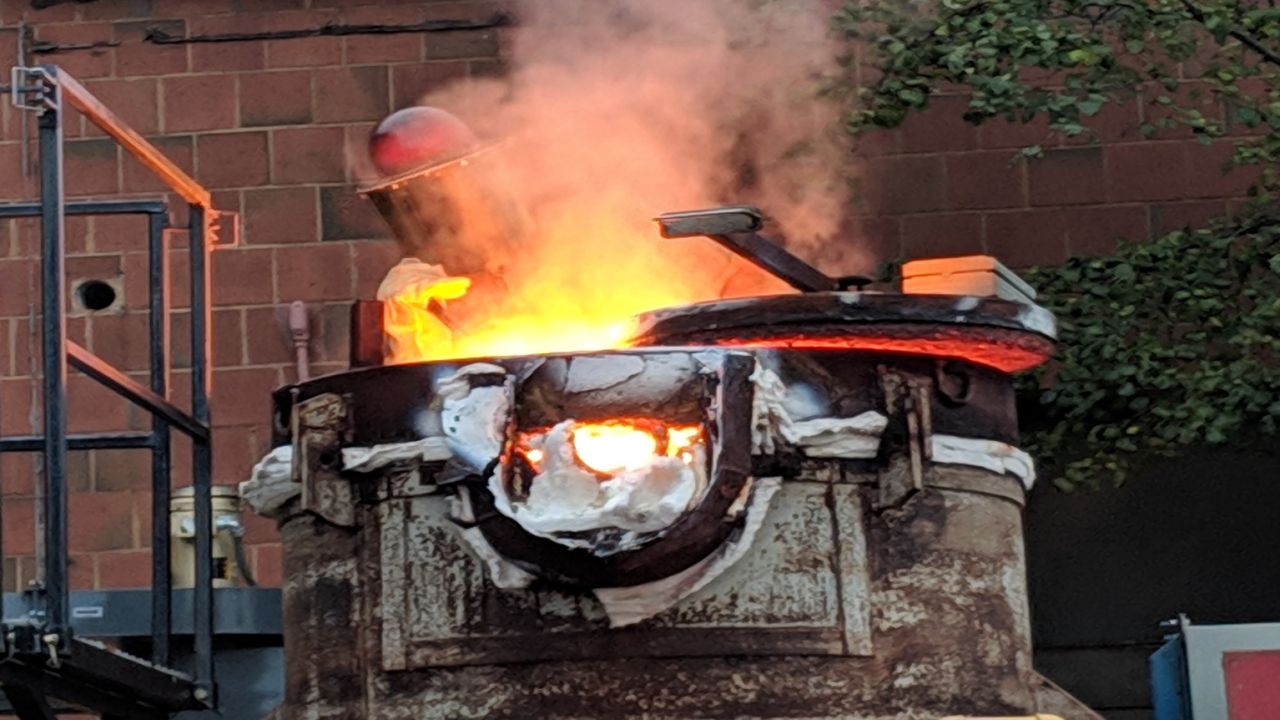
Syracuse, N.Y. (NCC News) — A fire Marshall lurked in the parking lot. On a dark cloudy afternoon on Syracuse University’s (SU) South Campus, a furnace was burning at over 3,000 degrees Fahrenheit, six times hotter than a kitchen oven can reach. Strikingly-bright orange flames burst out the top of the crucible. The rising smoke could be seen all around campus.
In that moment, there were only two places on planet earth where carbonatite lava existed. One was the Mountain of God in Tanzania, Africa. The other was Syracuse.
Biologist Jeffery Karson and Assistant Art Professor Bob Wysocky created the SU lava project about nine years ago. Ever since, they’ve regularly produced and staged molten lava flows. But they had never produced carbonatite.
“I asked professor Karson if he had any ideas that he hadn’t done yet.” Andrew Grant, a senior earth science student at SU said. “He he hadn’t done this yet, which is why I did it.”
Grant, Karson, Wysocki and graduate student Christopher Sant overlooked the experiment. But the first time creating the rare lava didn’t exactly go smoothly.
“The CO2 got so hot in there that it was just way above operating temperature.” Wysocki said. “It melted everything. It’s awesome because you don’t know until you try this kind of stuff.”
The unusually intense heat eroded the crucible. It will cost $2,800 to fix, according to Karson. The money comes from various grants and support from the College of Arts and Sciences.
The overheating also caused flames to radiate from the furnace. The fire department arrived on the scene after an onlooker called for emergency response. Wysocki said that the fire marshal’s main concern was that 9-1-1 was not alerted prior to the experiment.
“It’s odd that I would call 9-1-1 and tell them there is going to be a large fire behind the Com Art Building,” Wysocki said.
Despite the unexpected twists, the carbonotite was successfully created. Unlike the basaltic lava usually produced by the furnace, which turns into black glassy material, the carbonotite turned white as it cooled and solidified. Karson emphasized the high fluidity, or viscosity, of the carbonatite.
Karson and Wysocki set up cameras and other measuring instruments to record the physical properties of the lava.
The recipe is marble, baking soda and a large amount of heat. A long standing joke at the SU Lava Project applies: This probably beats your baking soda experiment.




